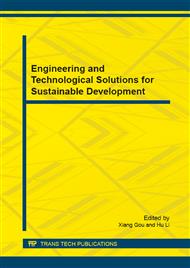p.54
p.59
p.63
p.67
p.73
p.80
p.85
p.90
p.95
The Application of Fluid Analogy Method for Estimating Transit Route ODs Using IC Card On-Off Passenger Data
Abstract:
Transit route ODs are important reference data for transit network planning and operation management. However, it has the difficulties in data collection, and is of high expense and survey error by means of manual investigation method. It is easy to collect the passenger boarding-alighting counts. The method of fluid analogy method (FAM) is presented for transit passenger OD estimation. It uses the concept of pipe flow, transit route and passengers are regarded as the pipe and fluid, generate bus route OD matrix based upon passenger boarding and alighting counts. The accuracy of route OD estimates generated from boarding-alighting data is tested against actual transit integrated circuit cards (IC cards) OD based on Beijing transit route. It is shown that error index for OD at AM peak hours, PM peak hours and all day is 0.79, 0.80 and 0.83, the result shows that it has a good performance. While the correlation coefficient for actual traveled stops and estimated at AM peak hours, PM peak hours and all day is 0.98, 0.98 and 0.99, which further validate the accuracy and reliability of FAM method in estimating transit route ODs. Compared with traditional equalization algorithms and other analytical model, the method is simple, efficient and able to get a unique solution OD. It has a high practical value in real-time scheduling of intelligent public transport.
Info:
Periodical:
Pages:
73-79
Citation:
Online since:
November 2014
Authors:
Keywords:
Price:
Сopyright:
© 2014 Trans Tech Publications Ltd. All Rights Reserved
Share:
Citation:


